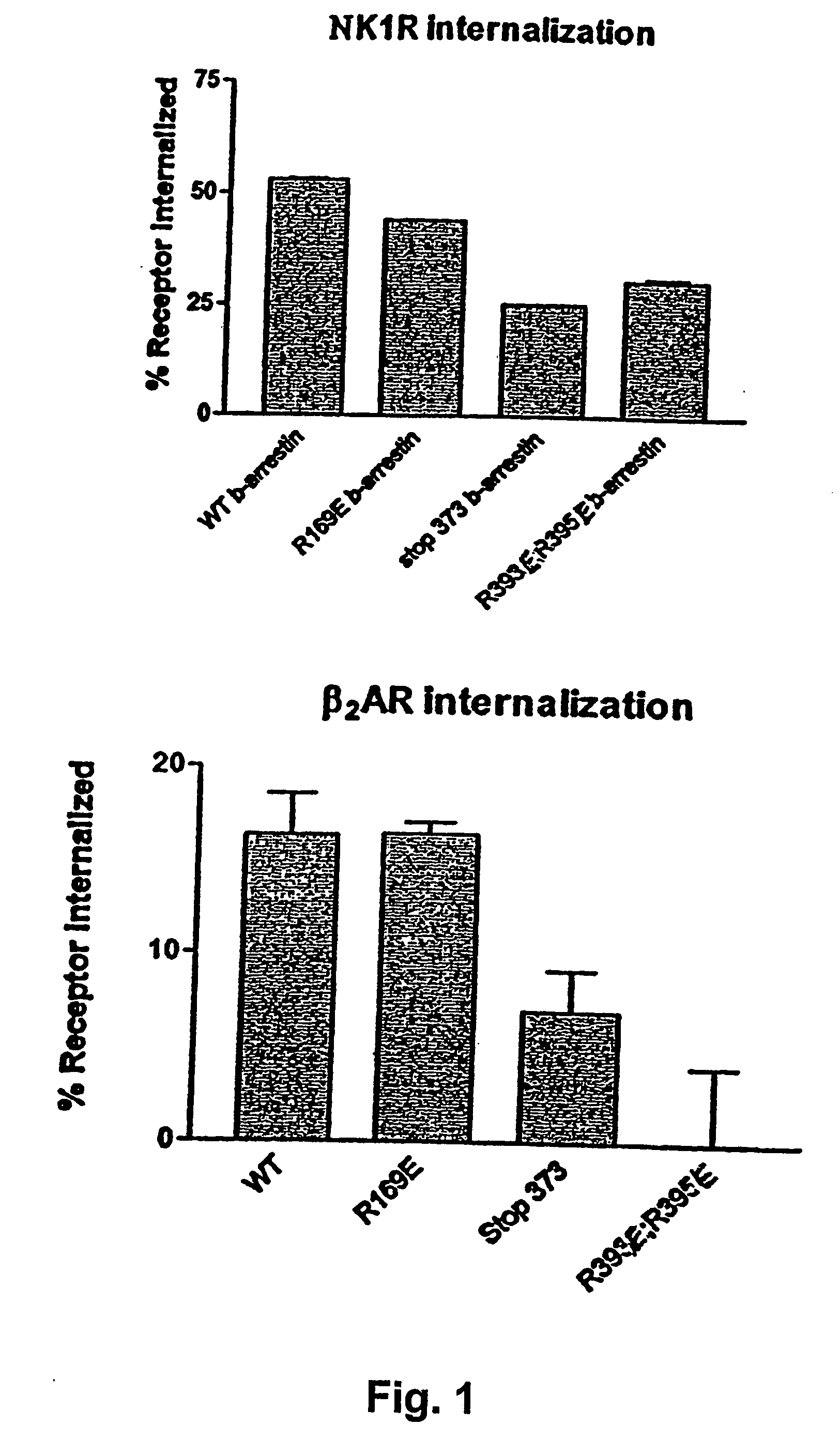Beta-arrestin based screening assays
a screening assay and beta-arrestin technology, applied in the field of improved enzyme complementation assays, can solve the problems of relatively weak and short termed enzymatic signals, and relatively weak and short termed -arrestin translocations
- Summary
- Abstract
- Description
- Claims
- Application Information
AI Technical Summary
Benefits of technology
Problems solved by technology
Method used
Image
Examples
examples
[0070] NK-1 Receptor Internalization Assays
[0071] COS-7 cells in 75 cm2 flask (3×106 cells / flask) were used for transfection. NK-1 / Rluc receptor (2 μg cDNA / flask) was coexpressed together with 6 μg GFP2 / β-arrestin 2, 6 μg GFP2 / β-arrestin R169E, 6 μg GFP2 / β-arrestin Lys 373 stop or 6 μg GFP2 / β-arrestin R393E, R395E. At the end of transfection period (3-5 hours), cells were washed twice with PBS, trypsinased and plated at a density of 2.5×105 cells per well in 12-well plates. After 48 hours, cells were washed once with assay medium (HEPES-modified DMEM with 0.1% BSA, pH 7.4) and incubated in assay medium for at least 1 hour before being incubated with 125I-labeled SP (30000 cpm / well) in 0.5 ml assay medium 10 min at 37 C. Cells were then transferred onto ice and washed twice with ice-cold PBS. Subsequently, the extracellular receptor-associated ligand was removed by washing once with 1 ml of acid solution (50 mM acetic acid and 150 mM NaCl, pH 2.8) for 12 min. The acid wash was colle...
PUM
| Property | Measurement | Unit |
|---|---|---|
| pH | aaaaa | aaaaa |
| pH | aaaaa | aaaaa |
| β- | aaaaa | aaaaa |
Abstract
Description
Claims
Application Information
 Login to View More
Login to View More - R&D
- Intellectual Property
- Life Sciences
- Materials
- Tech Scout
- Unparalleled Data Quality
- Higher Quality Content
- 60% Fewer Hallucinations
Browse by: Latest US Patents, China's latest patents, Technical Efficacy Thesaurus, Application Domain, Technology Topic, Popular Technical Reports.
© 2025 PatSnap. All rights reserved.Legal|Privacy policy|Modern Slavery Act Transparency Statement|Sitemap|About US| Contact US: help@patsnap.com

